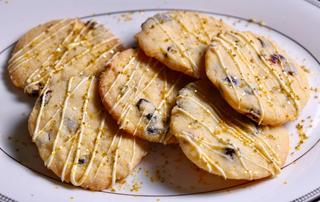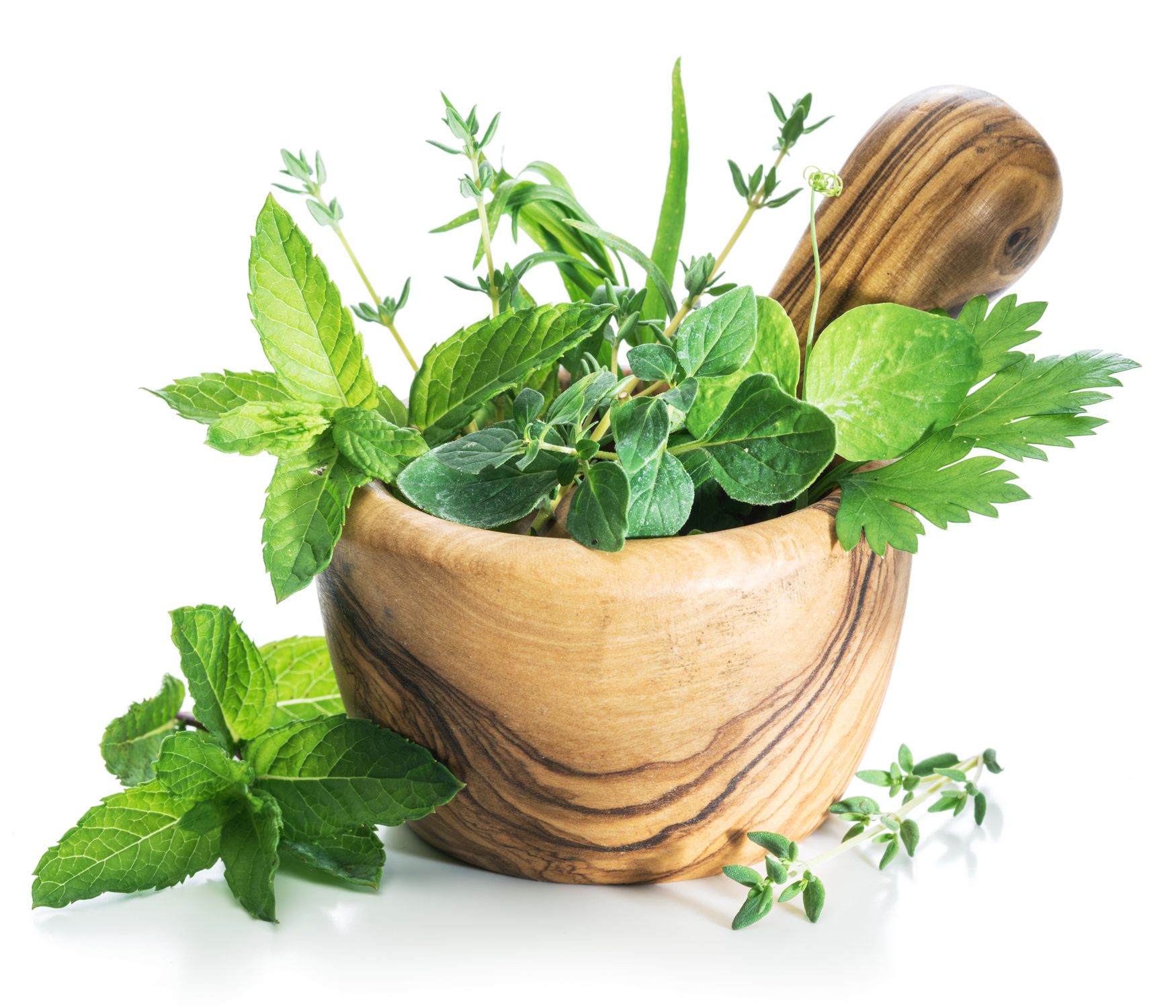Plants for Winter Interest


And these look great all year!
Landscaping can get boring in the winter— leaves drop from the trees and bushes, and your property gets the winter blahs. Look around: Is there anything to catch your eye in your yard during the winter season?
“Most homeowners buy plants that are full of life and color in the spring and summer,” says Jeff Dinslage, president of Nature Hills Nursery. “But these plants go dormant and look lifeless in the colder months.”
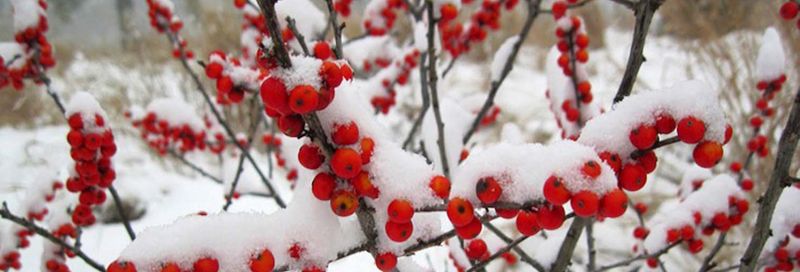
Dinslage points out that many attractive plants look great during the growing season and add much-needed color and winter interest during the coldest months of the year. Here are some of his favorite plants for adding landscape color and texture during the coldest months of the year.
Trees for winter interest
Evergreen conifers look great all year long, and they really make an impact when all the deciduous trees have lost their leaves.
Baker’s Blue Colorado Spruce is a great choice for acreage properties. The needles are a light, silvery blue, and the tree looks delightful in any landscape. Plus, this variety is a bit smaller than the typical blue spruce, reaching a mature height of 20-30 feet while staying slender at 10-15 feet in width. The pyramid shape looks great as an accent tree. Grouping 3 or 5 trees creates a winter refuge for birds and other wildlife. Baker’s Blue Colorado Spruce is cold hardy in USDA zones 3-7.

A mugo pine is an excellent accent tree for smaller spaces. This dwarf evergreen tree can be used as a foundation plant near a house or an anchor plant in a perennial bed. Mugo pines have a unique, mound-shaped growing habit that never gets bigger than 3-5 feet tall and about 8 feet wide. The needles maintain their dark green color all year long, and the tree grows well in zones 3-7.
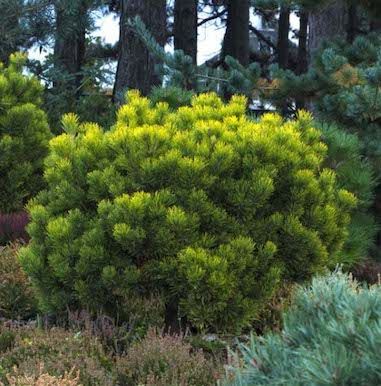
Shrubs for winter color
Red dogwood shrubs are a popular plant for their year-round appeal. A dogwood shrub blooms in springtime with white flowers. In the summer, a dogwood is a handsome shrub with glossy green leaves that turn burgundy-red in the fall. But the shrub really becomes a superstar in snowy weather, when the red stems are enhanced by a blanket of snow on the ground.
Bailey Red Twigged Dogwood has the familiar red twigs, and is a fast-growing variety that will quickly mature to 8 feet tall and 8 feet wide. Use one plant as a focal point, or plant several shrubs together to form an eye-catching hedge.
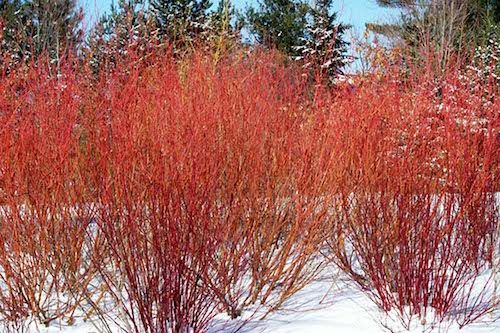
Another great shrub for creating winter interest in the yard is winterberry holly (Ilex verticillata). This deciduous shrub loses its leaves in the winter, but the bright red berries linger on throughout the winter. (There’s a reason it’s called winterberry!)
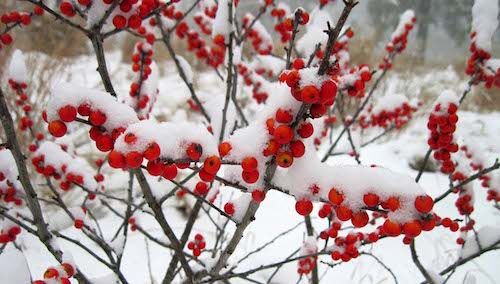
Most winterberry shrubs such as ‘Winter Red’ grow up to 8 feet tall. But dwarf varieties such as ‘Berry Poppins’ only get four feet tall. Winterberries love wet soil, so plant it in the wettest spot in your landscape.
Another plant with attractive winter berries is the Brandywine Viburnum. This beautiful shrub has some of the most beautiful berries to be found on any landscape plant. The berries start out vibrant green in the spring. Then they transition to white. In autumn, the berries turn pink and dark blue—and the berries hang on through the coldest months to create appealing winter interest when most shrubs look lifeless and boring. Brandywine Viburnum grows well in USDA zones 5-9.
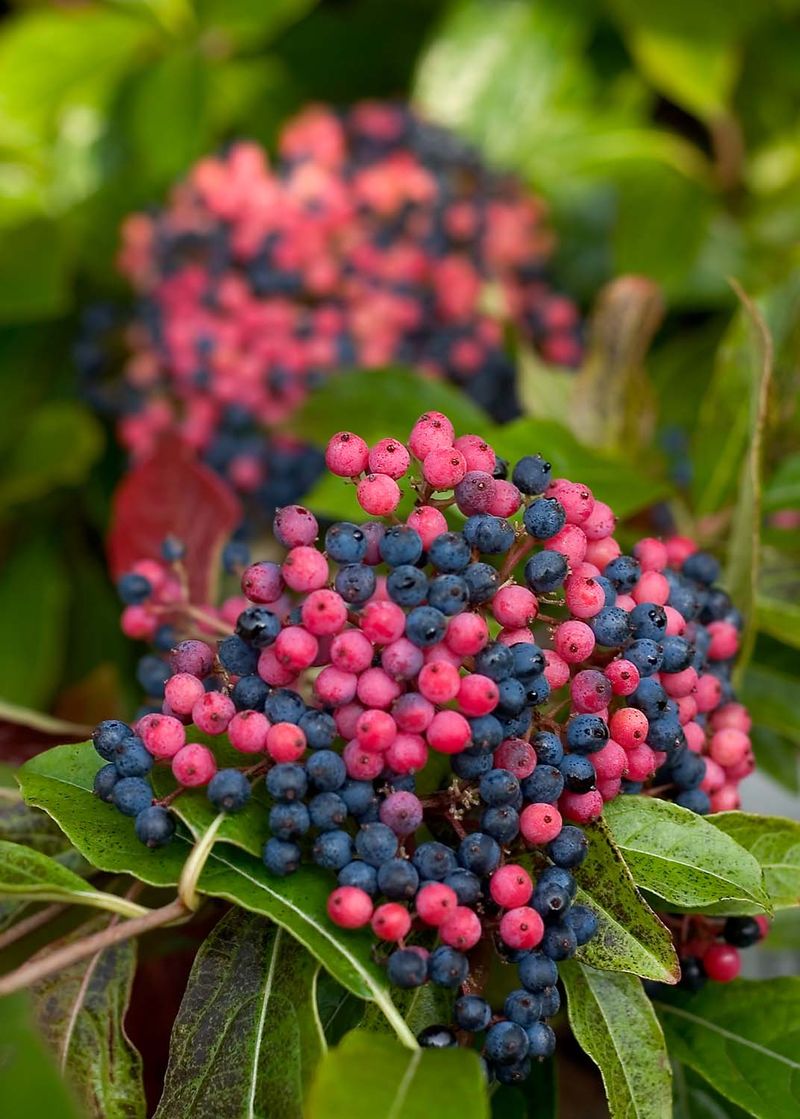
Ornamental grasses for winter interest
One category of landscape plants that is often overlooked for the winter interest they bring to cold-weather landscapes is ornamental grasses.
“Ornamental grasses can be the quiet anchors in flower beds and other garden settings during the winter months,” said Dinslage. “Grasses need very little care, and the ornamental varieties look fabulous when they are covered with a layer of snow.”
Dinslage loves an ornamental grass called Dwarf Fountain Grass. At 2 feet tall and 18 inches wide, Dwarf Fountain Grass can fit even in the smallest of garden spaces. This small variety can be planted in perennial flower beds, grouped together as an accent and even used as an interesting groundcover. All this plant needs is well-drained soil and sunshine. Dwarf Fountain Grass grows in all 48 states in the continental US, and it is drought tolerant and resistant to insect pests and disease.
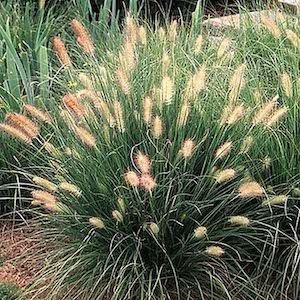
Blue Heaven Little Bluestem Grass grows throughout the USA (zones 3-10). The plant’s new growth in the spring looks blue, but it matures to hues of amber, rose and garnet in the summer. The beautiful seed heads persist, which is where the winter interest kicks in. When most shrubs have lost their leaves and perennials have died back, the attractive seed heads of Blue Heaven Little Bluestem Grass stay on the plant a long time—truly an all-season landscape plant.
Blue Heaven Little Bluestem Grass is perfect for use throughout the landscape. It fits into native landscapes, and it also works as a natural-looking hedge or border around decks, patios and pools.
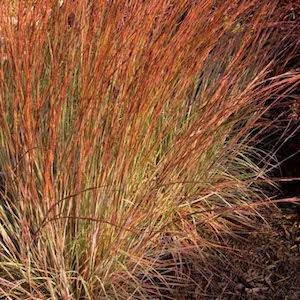
Tags:Garden & Landscape

Acreage Life is part of the Catalyst Communications Network publication family.










